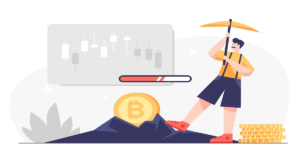Stock trading is best during the six months between November and the end of April, according to reasonable evidence.
In many countries and time periods, the November-April period outperforms the May-October period in stocks.
Over the past three centuries, this event has been documented in countless countries and in data from the United Kingdom. There is a rule that says sell in May and go away, which is sometimes called the “Halloween indicator.”.
During the summer months, the stock market performs poorly and traders should be more selective, as we will explore in this blog post.
Why do stocks perform poorly in summer?
It is common for the stock market to experience low volume and low volatility during the summer months. Since most stock traders sell their stocks in May, they will return to them after the summer.
The summer months are therefore less active in the market.
Research and data compiled by Bloomberg for US and international stock markets have historically shown that the winter and spring months after traders return from their summer vacations produce the best returns.
There are historically two key times in the year when market players are optimistic and resilient: the end of the year and the beginning of the year.
Stock returns during the summer months are estimated to be around 2%, compared to around 7% during the winter months. It may not always be the case every year, but the data is statistically significant, with more than 60% of returns during the winter.
According to the research, the S&P 500 index represents the 500 largest American companies. It has been observed in other countries that market indices follow a similar pattern.
The effect is only relevant for exchange-traded funds (ETFs) and index funds, not for individual stocks.
In summary, there seems to be an overall underperformance of the stock market during the summer months and an outperformance during the winter.
Therefore, traders should be more selective during summer trading since it is a slower time of year.
The summer months are a time when the market experiences reduced liquidity and volatility, so you need to focus on strategies that can help you avoid losses.
During the summer, you should follow a few important rules in your daily trading activity.
- You won’t get distracted by trying to hunt for many different setups if you focus on one strategy when trading stocks during the summer months. You can achieve better results in the long run by applying just one proven successful strategy rather than trying to mix and match them all.
- Trade no more than one stock at a time: This is important, especially when implementing a strategy where the average holding time is only a few seconds or minutes. When trading two or more stocks at once, you should avoid doing it.
- The first two hours after the opening bell are really hot for momentum in the stock market. This is especially true for small-cap and low-cost stocks that trade below $10. In order to review your trades throughout the day, you should not make any trades after 11:30 am.
- Make no more than five trades per day: If you make more than five trades per day, you are likely to lose more money. It is easy to avoid repeating the pain of your worst days if you follow these simple rules.
- Trading should not be done during pre-market sessions: It is best to prepare for the trading day before the opening bell is rung. Because of poor liquidity in pre-market sessions, wide spreads and bad fills are common.
Additionally, you don’t want to start your day losing money after you executed a trade during pre-market hours.As a result, you may be less able to find the best opportunity at the beginning of the normal trading session.
Use only “A” quality setups:Following these rules will make it easier for you to follow. You don’t have to enter a single trade every day. That’s your bottom line mindset. By filtering out setups that don’t carry the small risk/high potential ratio required to enter a trade, you can greatly improve your trading results.
It is something that moves the stock that is referred to as a catalyst. It is fortunate that catalysts are not seasonal and occur frequently during the summer.
Popular catalysts to watch in the summer period.
- The company’s earnings – During the summer, many public companies release their quarterly earnings reports. The market is affected by these earnings in a significant way.
Earnings reports that beat expectations usually lead to a rise in stock prices (and the reverse is also true).
- Management changes – Stocks can also experience high volatility when the company announces a change in management or the board of directors. The stock may jump higher if a CEO departs due to underperformance.
- Mergers and Acquisitions – Mergers and acquisitions are common in the stock market and can be announced anytime of the year. Whenever a deal like this is announced, the stock market becomes volatile.
- Social media – Stock markets are also influenced by social media. A good example is the retail traders who flocked to Reddit in 2021, driving shares of GameStop and AMC to record highs.



